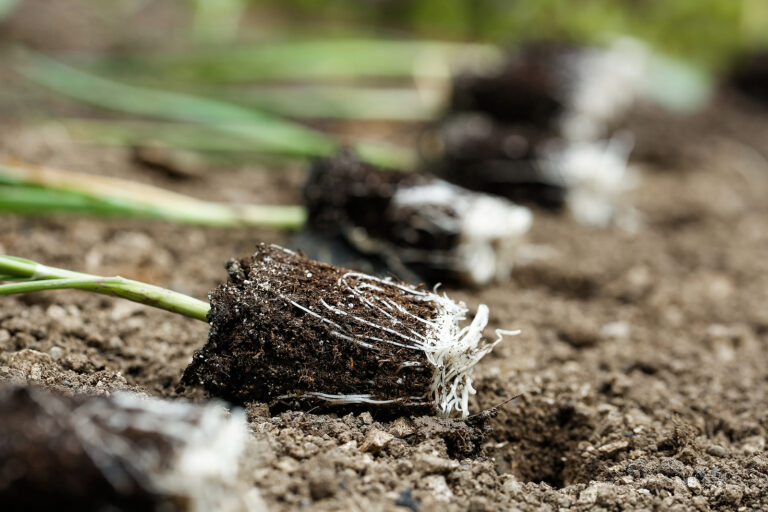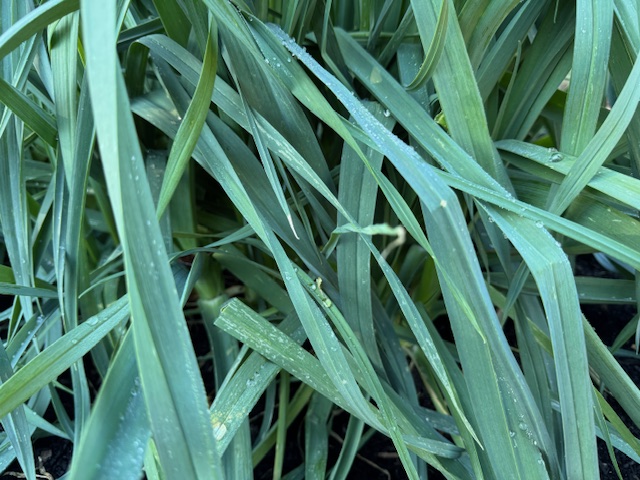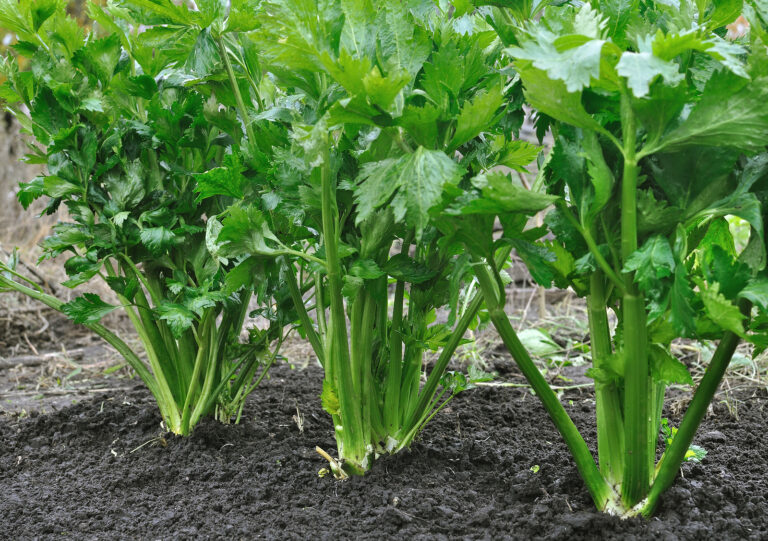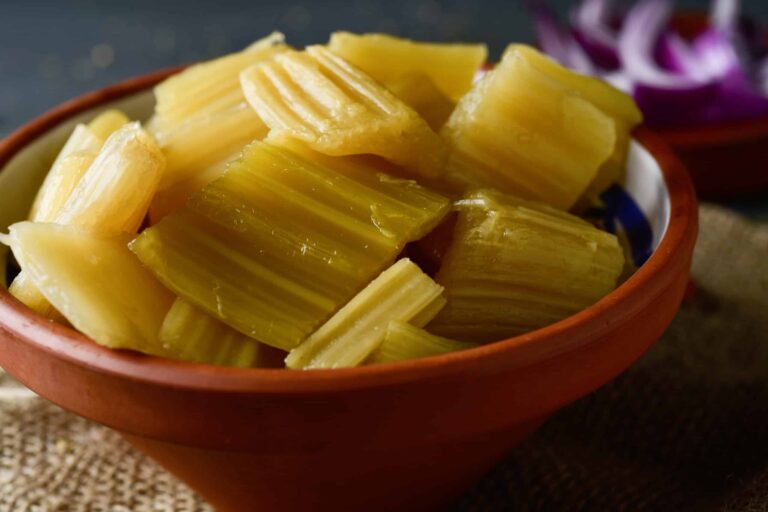Celery Care Throughout the Growing Season
Growing celery successfully requires consistent attention from planting to harvest. Over my 30+ years of gardening, I’ve learned that celery thrives in moist, nutrient-rich soil, with proper spacing, feeding, and pest management. Unlike many vegetables, celery is a heavy feeder and shallow-rooted, making consistent care essential for crisp, tender stalks. In this guide, I’ll share practical, experience-based tips to maintain healthy celery throughout the season.
1. Soil and Mulching
- Keep soil rich and evenly moist to prevent stringy, bitter stalks.
- Apply 2–3 inches of organic mulch (straw, shredded leaves, or compost) to retain moisture and suppress weeds.
- Replenish mulch periodically as it decomposes.
2. Watering
Celery is about 95% water. Inconsistent watering can cause tough, fibrous stalks.
- Water deeply and consistently, keeping soil evenly moist.
- In hot weather, water daily or every other day, especially for container-grown celery.
- Avoid wetting leaves excessively to reduce fungal disease risk.
3. Feeding and Fertilizing
- Celery is a heavy feeder; provide organic fertilizer or compost every 3–4 weeks.
- Use a balanced fertilizer (10-10-10) or liquid fish emulsion for steady growth.
- Monitor leaf color; pale leaves may indicate nitrogen deficiency, which can be corrected with side-dressing.
4. Hilling and Blanching
- As celery grows, hilling soil or using wrapping techniques can produce pale, tender stalks.
- Hilling also stabilizes stalks in windy conditions.
- Begin blanching 2–3 weeks before harvest for mild flavor.
5. Pest and Disease Management
- Inspect plants weekly for aphids, slugs, leaf miners, and caterpillars.
- Encourage beneficial insects like ladybugs and lacewings.
- Remove damaged leaves and practice crop rotation to reduce disease buildup.
- Keep soil and foliage clean to prevent fungal infections like early blight.
6. Support and Spacing
- Maintain 12–18 inches spacing between plants to promote airflow and reduce disease risk.
- For tall varieties, lightly tie stalks together to prevent flopping.
7. Seasonal Considerations
- In warm climates, provide partial shade during peak summer to avoid bolting.
- In cool climates, protect celery from frost with row covers.
- Harvest outer stalks regularly to encourage continual growth.
My Experience Tip
I’ve found that consistent watering and mulching throughout the season makes the biggest difference in celery quality. Even experienced gardeners sometimes underestimate how quickly celery soil dries, especially in raised beds or containers.
Final Thoughts
Celery care is a season-long commitment, but attentive watering, feeding, pest management, and proper spacing reward you with crisp, flavorful stalks. By following these steps, you can grow high-quality celery year after year.
Celery Seasonal Care Timeline
| Stage / Month | Watering | Feeding / Fertilizing | Pest & Disease Checks | Blanching / Hilling |
|---|---|---|---|---|
| Seedlings / Early Growth | Keep soil consistently moist | Light side-dressing with compost | Inspect for aphids and leaf miners | Not needed yet |
| Vegetative Growth | Deep, regular watering 2–3x/week | Apply balanced organic fertilizer every 3–4 weeks | Monitor for slugs, caterpillars, aphids | Begin hilling lightly if desired |
| Mid-Season / Rapid Growth | Maintain even moisture, mulch to retain water | Continue feeding with liquid fertilizer or fish emulsion | Remove damaged leaves; encourage beneficial insects | Start blanching 2–3 weeks before harvest if pale stalks desired |
| Late Season / Pre-Harvest | Water daily in hot weather | Side-dress if leaves show yellowing | Check for fungal infections, leaf miners | Finish blanching; adjust soil/mulch around stalks |
| Harvest & Maintenance | Keep soil moist to avoid stringy stalks | Fertilize lightly if planning continuous harvest | Remove pests as needed | Maintain hilling/mulching for tender stalks |
Celery Growing Hub
Start here: The Ultimate Celery Growing Guide: From Seed to Harvest
Celery Basics & Types
- Types of Celery Explained: Pascal, Leaf, and Celeriac Compared
- Best Celery Varieties for Home Gardeners
- Celery vs. Celeriac: Growing, Harvesting, and Cooking Differences
- What You Should Know About Celery Pollination
Planting & Site Prep
- When to Plant Celery by USDA Zone
- Celery Seed Starting Tips
- Direct Sowing Celery: Outdoor Seed Starting Guide
- Proper Celery Spacing and Planting Layout for Healthy Growth
- The Best Companion Plants for Celery and What to Avoid
- How to Grow Celery in Containers or Pots
Care & Maintenance
- How to Water Celery for Crisp, Tender Stalks
- Fertilizing Celery: Feeding Tips for Bigger, Tastier Stalks
- Celery Blanching Techniques: How to Get Tender, Mild Stalks
- Celery Care Throughout the Growing Season
Pests & Diseases
- Common Celery Pests and Diseases How to Control Them Naturally
- Celery Growing Problems: Troubleshooting
Harvest & Beyond







